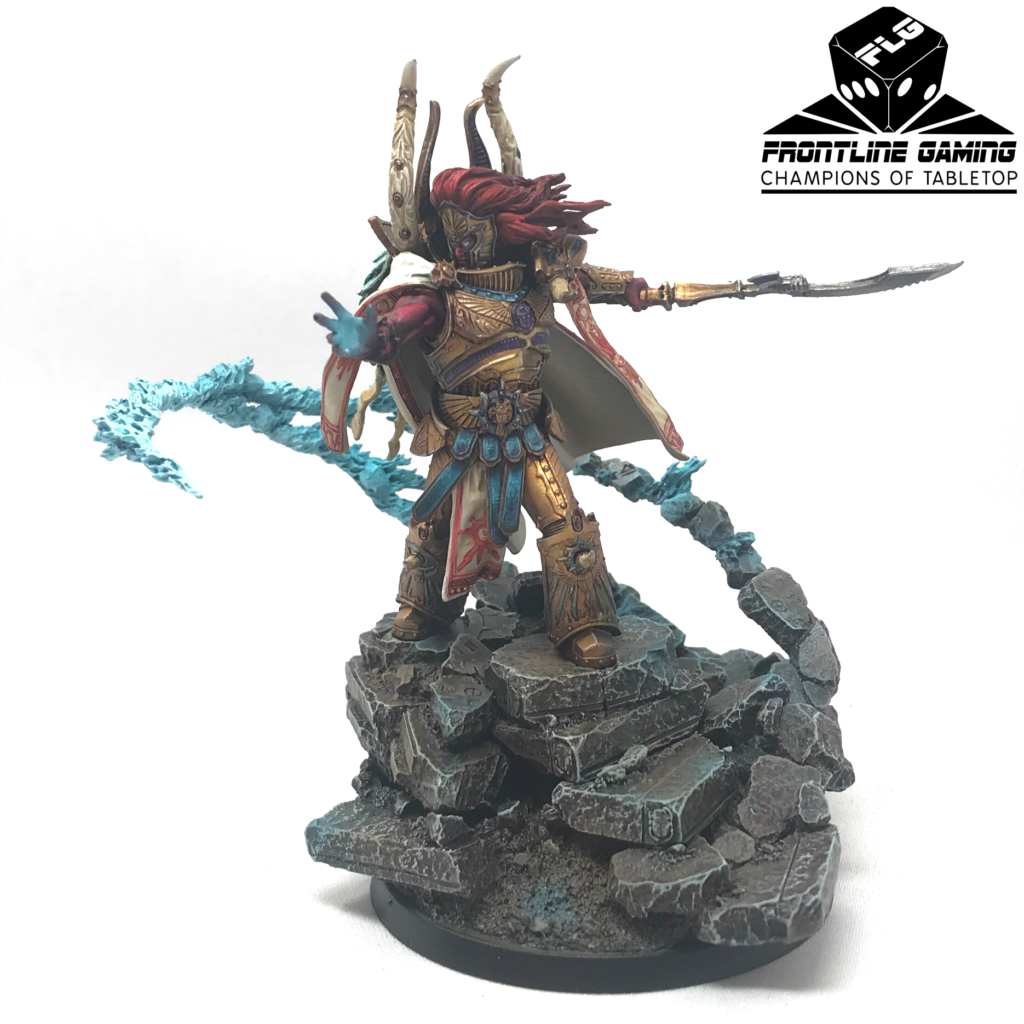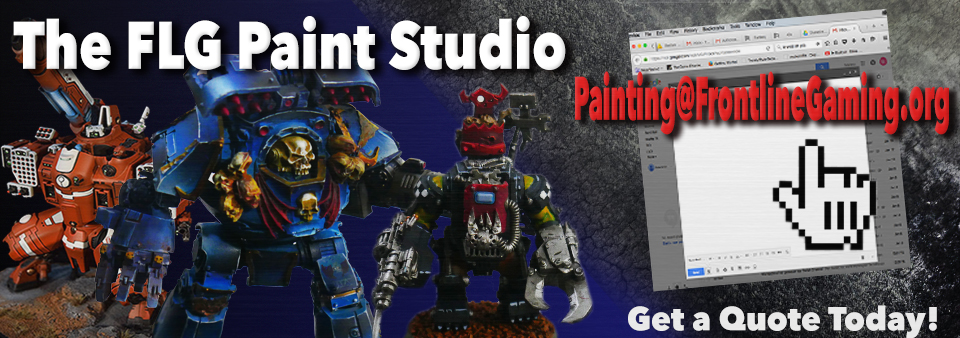Hi all,One of the things I have wanted to do for a while is interview some commission painters. I think there is a lot of mystery in terms of who these people are and how they got into their role. So without further ado, let’s dive in!
First, let’s meet our Respondents:
A) Remote artist, started working with FLG in 2023
B) Full time, in house artist with FLG 4 years
C) Full time in house artist, working with FLG 5 years
D) Remote artist, working with FLG since 2020
E) Remote artist, working with FLG since 2022
F) Remote artist, working with FLG since 2018
G) Remote artist, working with FLG since 2017
H) Remote artist, painting for FLG since 2020
I) Remote artist, working with FLG since 2017
J) Remote artist, working with FLG since 2018
K) Remote artist, working with FLG since 2020

- Is painting your full time job or something you do on the side? How long have you been doing it?
- A: Currently something I do on the side but I’m hoping to paint full time in the near future. I’ve been painting miniatures since the early 80s but I’ve only been doing commissions over the past couple years.
- B: Painting is my full time job. I’ve been a full time painter for 4 years now and loving it.
- C: I have been a miniature commission painting artist full time since 2017. before that I was off and on part time since 2011-2012.
- D: I’ve done commission painting full time for about 2 years now. I have dabbled with it part time for about 5ish years before with local clients.
- E: Painting is something I do part time. I’m a tattoo artist and business owner. I usually dedicate 2-3 days a week to painting
- F: No, this is not my full-time job. I am currently a special education teacher. This is a part-time job that I do for fun. I’ve been painting for 20 years now. I am 28 years old.
- G: I have been painting for just over 8 years now as a full LLC business. It has over the years gone from part time to full time and back again.
- H: I am a full time painter for over 2 years now.
- I: Yes, this is my full-time job and I have been doing this for 5 years full-time and 2 years as a side gig prior.
- J: Painting it’s my full time job and I been doing for over 6 years.
- K: It’s not my day job but I certainly do I full time when I’m free. Up to 12-14hr paint sessions at a time lol. Professionally painting for 2.5 yrs.
- A: Currently something I do on the side but I’m hoping to paint full time in the near future. I’ve been painting miniatures since the early 80s but I’ve only been doing commissions over the past couple years.
- What are some misconceptions people have about commission painting? What should they consider before they look into it.
- A: Painting well takes time. If you want good looking models be ready to compensate the artists for the time they spend painting.
- B: Cleaning, gluing together, and properly prepping the model for painting is essential to a great end result. That means if there are any mold lines, sprue nubs, gaps, messy glue on the model it will be a glaring problem once the model is painted. For that reason it’s better to let the artist as the expert build your models so that they are a prefect canvas for a superior result
Anyone looking to getting into commission painting should know efficiency is just as important as the quality of your end result when you’re painting because the efficiency determines how many commissions you can complete in a given time. To that end, you need to know many different painting and modeling techniques as some are more appropriate in certain circumstances than others. YouTube is an incredible resource. I recommend you watch tons of paint tutorial videos from lots of different painters and practice the techniques they demonstrate.
- C: Getting a commission done is super time intensive and I would advise people seeking work to expect it to be pretty expensive and take a while and keep that in mind before they start the process. one thing I’d recommend is if you are sending in models that you have built, make sure you don’t prime the models. the commission studio is adept at cleaning and priming models and this creates a foundation for the work. It’s basically impossible to fix any problems created during this step, for example a super grainy texture on the models from bad primer or primer that is too thick, etc.
- D: I think a big misconception is that you need a large collection of paints and gear beforehand. Not every project requires every possible tool or color. Don’t try to get everything under the sun before starting, you can get tools and paints as you need them for each specific project.
- E: People seem to have a misconception that commission painting is expensive I think it’s pretty affordable to get something finished and on the table
- F: A huge misconception is the amount of time and effort it takes to paint. You will never receive your true worth for painting. Try use commission painting as a way to try new skills, paints, techniques that you normally wouldn’t on your own models.
- G: That commission painting is easy. It can be easy when you’re just painting a HQ figure or single squad, however it can be overwhelming to assemble and build 100+ figures and 10 tanks all in one go. Do you have the temperament to keep pace on the job at hand.
- H: I’d say pricing and time frame are usually the top 2.
- I: A lot of times, customers will see box art of an army or a piece that someone did for a competition and they want that level of detail through the whole project. We army painters can do that but those levels of painting are not “tabletop” and even sometimes outside of “tabletop+”. Pick and choose a few key models that you want that level of detail on so that your whole army can be done efficiently.
- J: I believe people think it’s an easy job, but it really isn’t that easy. You need to love to paint models, at least 6 hours a day. I have love more the hobby part of miniature games than playing since I found out about this amazing world of strategy games, to the point that I offered to paint my friends models for free! So my advice for anyone that want to work as a commissioner painter it’s to really love to do it, if not you will feel burned out and frustrated.
- K: The ease of doing it and commitment it takes to be successful. Self motivation and willingness to sacrifice your time is key to success. Definitely want to look at how consistent and quickly you can complete a project. It’s great if you create a masterpiece for a client, but if you take 100hrs to complete it and only make 300$ for the work, your essentially paying yourself 3$ an hour.
- A: Painting well takes time. If you want good looking models be ready to compensate the artists for the time they spend painting.
- How flexible can you be with consumer requests? E.g. paint colors, methods etc.
- A: Very. I’m happy to try whatever color schemes or ideas the client wants
- B: I can be very flexible with consumer requests as long as my time is properly accounted for in compensation. I can do any paint color or method they’d like as long as they understand that my time/cost estimate is the product of years of experience. Please don’t try to haggle or tell me how long it should take to complete the request. I know how long things take and if my quote is too high, feel free to change the request, or look for another artist.
- C: we can accommodate requests pretty well but up to a point. the best thing you can do is give the studio as much information about what you want up front so the studio can work out any problems before the work actually starts. Its way easier to get things right the first time then to go back and fix the project after its been painted. Keep in mind though the more leeway you give artist creatively though the faster and more efficient they can paint it and it allows them the freedom they need to make really good artistic choices.
- D: I like to think I’m very flexible. I haven’t had a request for a specific paint that I didn’t have, but I’d always be willing to grab a specific one. I’ve also done magnetization and various camos. I haven’t done a lot of freehand, but I want to learn and get better at it.
- E: .I try to be as flexible as possible and send a test model for approval to every client. The most rewarding part of doing commission artwork is translating what the client is thinking on to the canvas , model in this case.
- F: With my experience, I can be very flexible. I have tons of different resources and tools to use, like an airbrush, that helps speed the process up.
- G: I try to be as flexible as possible however in my experience the more involved the customer is in the artistic process the worse it is. If you let a client get comfortable with crazy and unrealistic requests then it just devolves from there.
- H: I am willing to be as flexible as my abilities allow to ensure a quality finished product.
- I: Personally, I am very flexible as I have had some rather bizarre requests.
- J: I always been flexible to my customers requests, and sometimes go a little bit over of what they asked, but for me the most important part it’s to make your customers happy with the results.
- K: I love a challenge. Several projects I’ve taken on have involved massive amounts of creativity to achieve. One in particular was to make the Baneblade kit fully modular to allow all 8 variants to be usable. I have done a massive display involving 3 completely custom chaos knights rampaging through a city trying to be held by Imperial fists. As long as the money is there to support the effort, I’m willing to do most anything on project.
- A: Very. I’m happy to try whatever color schemes or ideas the client wants
Thank you all for your responses! In Part 2 we will dive into:
- Are there any really cool commissions or models you have worked on that stick with you
- What about any weird or wonky customer requests that made you laugh?
- What do you like most about this job?
And remember, Frontline Gaming sells gaming products at a discount, every day in their webcart!



